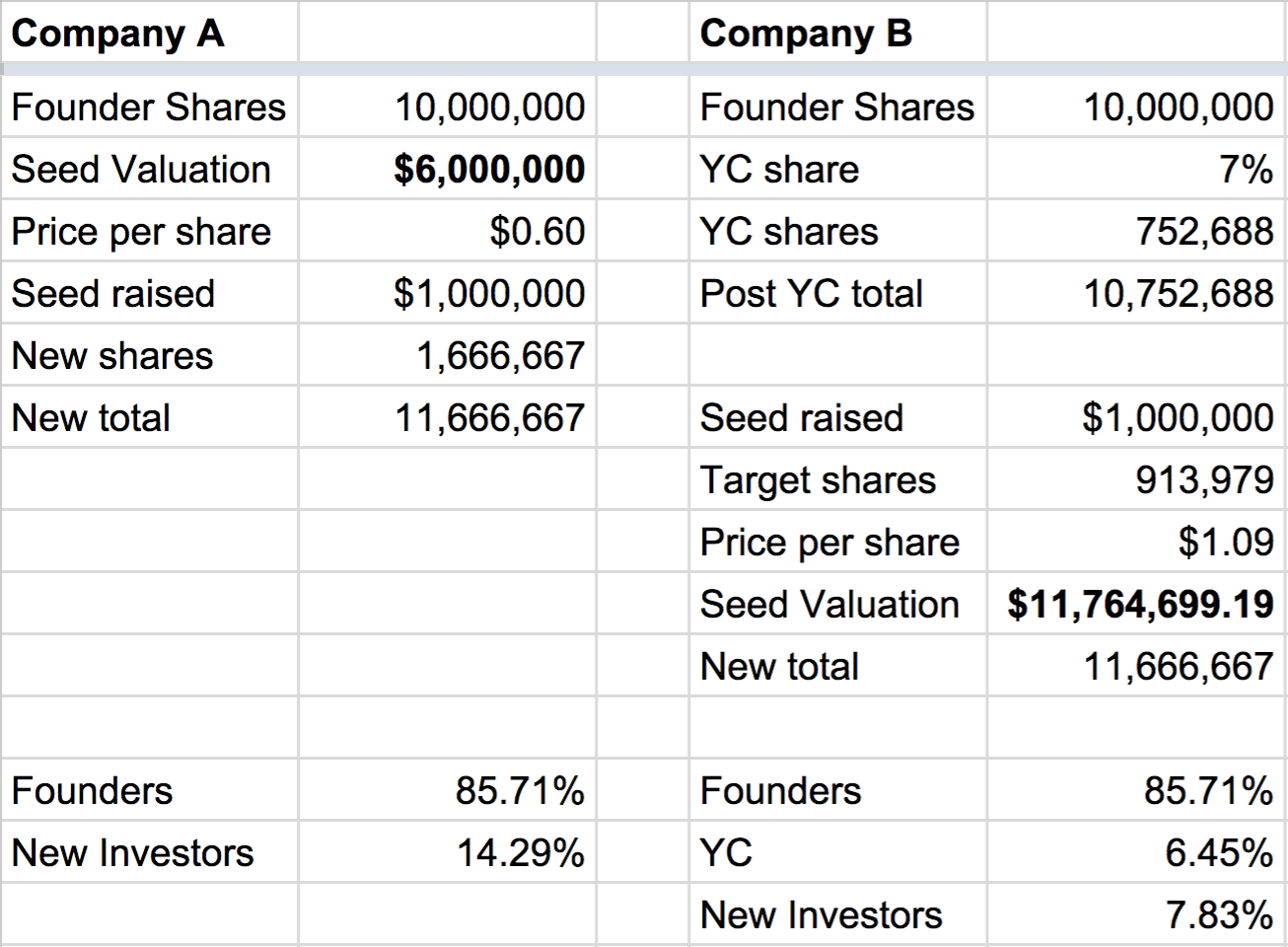My startup YesGraph just went through the Winter 2015 batch of Y Combinator. This is actually my second time, after going in Winter 2008 for my first startup Tipjoy. A lot changed and a lot stayed the same, so lets walk through it.

Size
The W08 batch had 21 companies. The W15 Batch was 116. You can probably guess what needed to change for this to work. Size is in the background of this entire post.
Focus
YC is all about a focused effort to build your startup. They’ve refined how they phrase this, but the intent is that you exclusively:
- Code and talk to customers
- Eat, sleep, and exercise
You should do these at the exclusion of everything else, including hiring, fundraising, long term biz dev, conferences, vacation (obviously), and anything that isn’t about your health or your company’s core health.
The hiring bit was tough for me in W15 because we raised $1M before YC. I was eager but I’m only now ramping up. In W08, we’d raised $50K from friends and family, making it a non issue.
Partners
YC went from the 4 founding partners to over 20 full time and many part time. Paul Buchheit was always around in W08, though I don’t know if he was an official part time partner. He invested in and gave advice to the companies in the batch (thanks Paul!). Carolynn Levy was still at WSGR, but came by to give advice. Kate Courteau was also around, but again not officially besides doing all the great architectural work of the space.
Now you have a dozen YC alums that are back as full time partners. This increased firepower is the main way YC scales: horizontally. Everyone wants to meet with Paul Graham because his essays were startup preschool for many founders, but there just aren’t enough hours in the day for him to meet with everyone. Now he is retired from the day to day, and only does periodic office hours that almost instantly fill up.
Groups
YC has tried to mimic the earlier days by breaking the batch up into groups with group partners. So instead of talking to PG & JL, I mainly talked with Garry Tan and Justin Kan. It is important that these group partners know who you are and know your product and market. With so many companies, it is really easy to get lost as an advisor. This focus bring deeper insights.
Paul Graham is a kind of stateless incisive advice machine. I bet he couldn’t name what YesGraph does. Our last conversation was more cocktail party than office hours. In fact I didn’t have official office hours with Paul or Jessica or Trevor, though talked to them all informally. It’s actually great being an alum and coming back because it’s like meeting up with a friend you haven’t seen in a while.
Group Office Hours
The weekly dinners when there were fewer companies in W08 brought a more intimate setting. YC has tried to mimic this with group office hours. I should preface that they are always experimenting and changing things up. I probably missed some earlier versions of this and will miss what they try for the next batch.
There are certainly lots of questions that benefit the group. Many companies are trying to scale sales. Many companies are trying to grow a consumer audience.
There were more product demos and founder to founder feedback in W08 than in W15. There was more product advice and less growth advice.
Network
The YC Alumni network is huge. That is amazing to get reach into so many companies and their networks. But there is no such thing as an intimate group of thousands. With size comes dilution per relationship. Sam Altman said, “you can’t all just email Drew Houston at Dropbox about anything; respect their time.”
I completely agree, but in 2010 I started working at Dropbox by emailing Drew.
Going through a second time is interesting because I was ostensibly already part of the network. But there is a difference between having had a YC company and currently running your YC company.
Dinners
YC in W15 has a chef. YC in W08 had PG and crock-pots full of slop. That is what they called it, but I actually really liked it! They still serve no beer, which I’ve always found a bit odd. Founder bring their own sometimes.
The dinner speakers are stellar. There were more YC alums in W15. There seemed to be more billionaires in W08. On balance, I bet startups that recently escaped the trough of sorrow to reach initial traction are more valuable for young companies. In W08, Ev Williams doesn’t actually know why Twitter took off. Marc Andreessen is a lion and gave a convincing case in W08 for why Ning’s “double exponential” viral loop was going to take over.
Advice
At this point, I’m already connected to very many notable people in tech. I’ve seen everyone important at least give a talk. I can predict exactly what an investor will tell the batch about how to pitch them. I’ve successfully pitched many investors and go to them for advice.
But there is something useful about being told the fundamentals. It isn’t as complicated as you like to think. You aren’t special. You just need to do the work (code and talk to customers) to win. Growth solves all problems.
There was less product advice in W15, but the advice I got was good. That is probably because the product I’m building is more complicated and harder to give advice about. Partners aren’t going to dig into YesGraph’s machine learning or social graph analysis. It was easier to advise building something for Twitter at Tipjoy. There are many developer facing startups that have successfully gone through YC, so I did get great advice there. Some came from part time partner and Parse founder Ilya Sukhar, which shows that the part time partner contribution is significant.
The best advice came from 1:1 office hours, like with my group partners, Garry and Justin, and Sam Altman. It was the most detailed and focused.
Software
YC has more software to organize things, but it is just getting started. The office hours booker is convenient, but doesn’t have notifications. Hacker News now has a YC founder forum that helps scale the community, but it also doesn’t have notifications. There is software to organize group office hours, but that software is google spreadsheets.
Overall I’m excited to see what they can do here. LinkedIn has one core job, professional networking, and it fails miserably for a group as powerful as YC. Once YC ups their software game, it will be more powerful than any other tool out there. They definitely have top software talent working on it.
Tone
The founders in the batch are really excited. Nothing has changed there, and I love it. Many are really fresh. Many more are far more experienced than I was the first time through. Everyone wants to win. But startups are highs and lows, and when companies are going through tough times fundraising, the network is there.
Sometimes they need to say things that I’m surprised they need to say. This is what happens at an operational scale I guess. I’ve heard some surprising things about what some idiot alumni have done, and they just don’t want to see it repeated. They also need to be crystal clear in their advice, which means saying some things obvious to almost everyone. That “almost” is the key bit.
The partners are all wonderful people. This post from Jessica Livingston about culture is spot on. There is something special about the people they recruit to be involved in YC. Their advice is often blunt, and there is a fine line between incisive and harsh. The tone sets up an environment that balances willingness to ask any questions with the direct advice needed to solve the problem.
YesGraph Specific
So why did YesGraph apply? We actually got rejected for W13 when we applied with a recruiting idea. Thankfully we eventually got in so I can actually tell that story! You’d be surprised by the number of YC alums that get rejected when applying again — and they eventually get in.
After we pivoted to focus on growth and raised a new round, we were focused on something in our wheelhouse. The team was better suited for the product and market and overall in a better position to win.
So why apply again? The advice and network are a wonderful reason to do YC. It’ll help with recruiting and future fundraising.
For YesGraph specifically, another strong factor was that we were a developer facing service. Our batchmates proved to be excellent early customers, giving essential feedback on the product. I talked to lots of companies about growth, and hearing their concerns and how they thought about the world was wonderful. This focused user research would be hard to replicate because the tone of willingness to help is more rare with normal use research.
Also, there have been some amazing developer facing services coming out of YC. Heroku, Parse, Stripe, Docker, and more. I think it is because the partners are so much more technical than most investors, and they’ve built companies of their own. They know such services matter and how to support them.
Another factor is Demo Day. I’ve fundraised enough to know that it is painful at best, and deadly at worst. Demo Day is something special, and many companies going through it don’t even know how good they have it. Demo Day sets up the perfect environment to make a market with artificial deadlines with investors filtered in batch. If fundraising is a painful marathon, Demo Day is like steroids. It makes it easier to get to the finish line and is an unfair advantage over other startups.
A personal emergency actually prevented YesGraph from presenting at Demo Day. Considering we raised a seed before YC, this isn’t bad timing actually. We’ll make it up in the S15 demo day, hopefully targeting our Series A. We have a lot to do between then and now to earn it.
If you want to help us make it, go try out YesGraph. We help your app grow by recommending who users should invite. If you already are using us, tell your friends about YesGraph.
Subscribe to get future YesGraph posts here.





